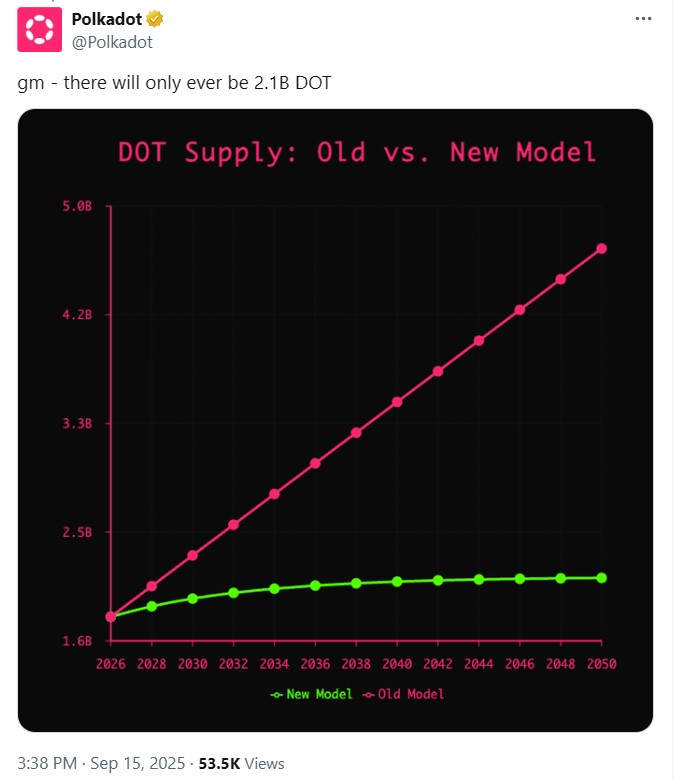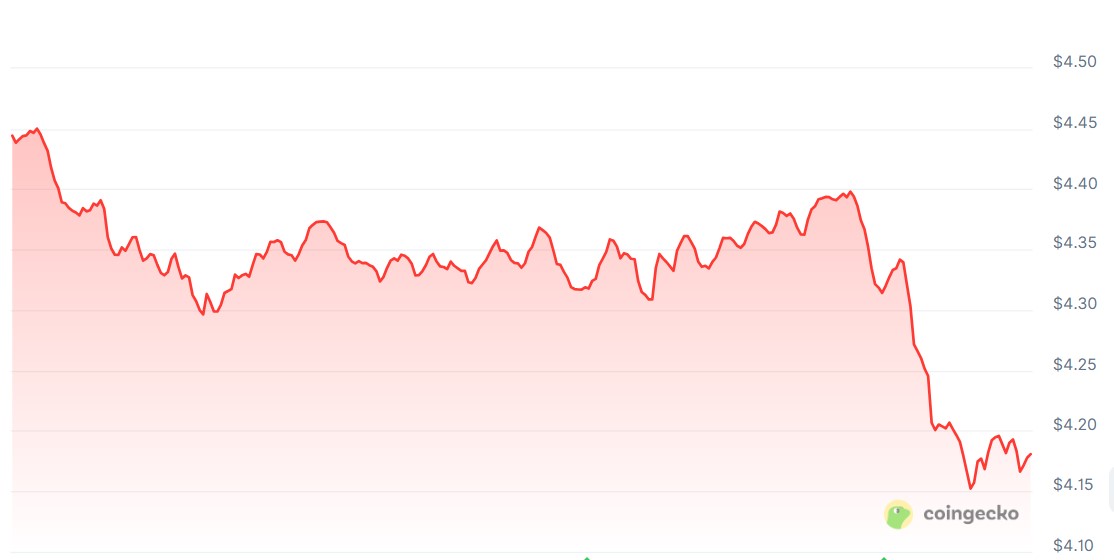Polkadot DAO has approved a 2.1 billion DOT hard cap, replacing an uncapped inflation model; the change introduces biannual issuance reductions and aims to limit total supply growth to add predictable scarcity for DOT holders.
-
New hard cap set at 2.1 billion DOT for the first time
-
Issuance will reduce gradually every two years (on Pi Day, March 14) to curb inflation.
-
Polkadot estimated the old model could have expanded supply beyond 3.4 billion DOT by 2040; current supply ~1.5 billion DOT.
Polkadot hard cap: DAO sets 2.1B DOT cap, biannual issuance cuts to limit inflation — learn what it means for investors. Read more.
What is the Polkadot hard cap and how does it change DOT supply?
The Polkadot hard cap is a governance-approved maximum supply of 2.1 billion DOT tokens. Under this change, annual uncapped issuance ends and a mechanism reduces new issuance every two years, aiming to slow supply growth and introduce long-term scarcity for DOT holders.
How will the new issuance schedule work and when does it trigger?
The DAO specified that issuance reductions will occur every two years on Pi Day (March 14). Each adjustment reduces the token issuance rate relative to the previous epoch, moving the network away from the prior model that minted roughly 120 million DOT per year with no total supply limit.
At the time of writing, Polkadot’s total supply is about 1.5 billion DOT. Under the old inflationary model, Polkadot projected supply could exceed 3.4 billion DOT by 2040. The new cap of 2.1 billion sets a hard ceiling and schedules gradual issuance declines to approach that limit while maintaining network incentives.

Source: Polkadot
Why did Polkadot launch the Polkadot Capital Group?
Polkadot launched the Polkadot Capital Group on Aug. 19 to improve institutional engagement. The division is designed to connect traditional finance firms with Polkadot’s blockchain infrastructure for asset management, banking, venture capital, exchanges and OTC trading use cases.
The group will highlight institutional use cases such as decentralized finance (DeFi), staking services and real-world asset (RWA) tokenization. The move aligns with the tokenomics change by making DOT’s supply dynamics more predictable for institutional risk models.
When did DOT price react and what was the market impact?
Since the announcement, DOT’s market price fell roughly 5%, sliding from $4.35 to $4.15. Short-term price moves likely reflect market digestion of the policy change and shifting expectations about liquidity and incentives.

Polkadot’s 24-hour price chart. Source: CoinGecko
What are the expected long-term effects on DOT holders?
Capping supply at 2.1 billion is expected to introduce scarcity and reduce inflationary pressure over time. That should make DOT’s supply trajectory more predictable and could support valuation frameworks that rely on limited supply assumptions. However, network economics — staking rewards, validator incentives and on-chain activity — will continue to influence price dynamics.
Frequently Asked Questions
How many DOT tokens exist now and how close is that to the cap?
Polkadot currently has about 1.5 billion DOT in total supply, placing it roughly 71% of the way toward the new 2.1 billion cap. The issuance reductions aim to slow progress toward the cap over time.
Will validator rewards change after the cap is enforced?
Validator and staking rewards will be governed by on-chain parameters and network economics. The emission schedule reduction could lower nominal issuance rewards, but network activity and staking rates will determine real yields.
Key Takeaways
- Hard cap established: The DAO set a 2.1 billion DOT maximum to curb long-term inflation.
- Biannual issuance cuts: Reductions occur every two years on March 14 to gradually restrict supply growth.
- Institutional push: Polkadot Capital Group aims to attract traditional finance, aligning supply predictability with investor expectations.
Conclusion
The Polkadot DAO’s 2.1 billion DOT hard cap and scheduled biannual issuance reductions mark a major shift from an indefinite inflation model to a predictable supply framework. This change, paired with Polkadot’s institutional outreach through the Polkadot Capital Group, is designed to make DOT more attractive to long-term and institutional investors. Watch forthcoming governance updates and issuance curve releases to assess implications for staking, validator economics and market liquidity.





